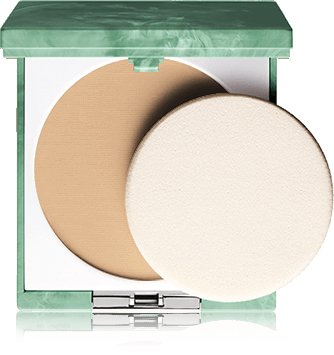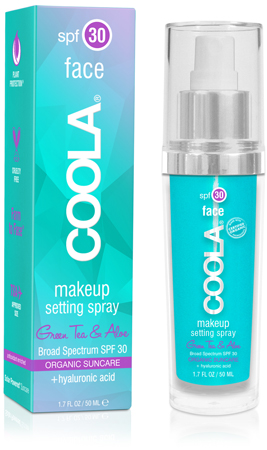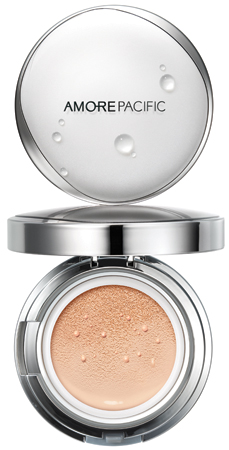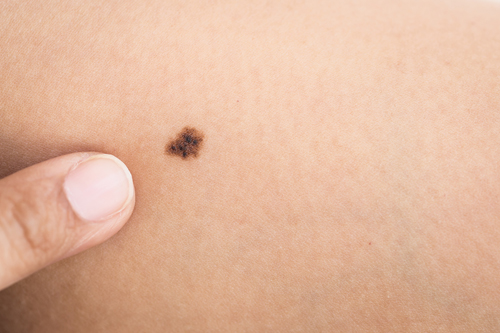
We hardly need summer to come around to start getting serious about sun protection in OC, but there is never a bad time to freshen up your SPF game. In the soaring temps of July and August, even high-end makeup skin options can get runny or separate when accidentally left out uncovered or in the car, making it difficult to reapply as often as we should. We love these melt-proof options that not only keep you covered when it comes to skin safety, but nicely take sweat to the, ahem, matte on those sizzling summer days.

Clinique Almost Powder Makeup Broad Spectrum SPF 15
More than minerals, this long-wear formula helps keep pores out of trouble using antioxidants and SPF to protect skin. The lightweight face fix can be used with either sponge or powder brush and tucks nicely into a beach bag for touch ups.
$27, www.Clinique.com

SPF 30 Makeup Setting Spray from COOLA
Putting on multiple layers of sunscreen and makeup can feel goopy at best. Prep your gorgeous mug as usual, then just spray this cooling mist over your finished look to add a matte layer of sun protection. Refresh throughout the day without messing your makeup to keep covered. Bonus — the cucumber and aloe vera elements help you chill out on steamy days.
$28, coolasuncare.com

AmorePacific Color Control Cushion Compact Broad Spectrum SPF 50+
This pre-soaked sponge cushion lets you dab and cover your skin with 50+ UVA/UVB protection using bamboo sap and green tea botanicals— particularly helpful for the beautiful array of skintones we sport in OC. For those looking for fuller coverage, new Age Correcting Foundation Cushion SPF 25 protects and offers anti-aging benefits.
$60, us.amorepacific.com
Already got damage from past tanning sessions and worry it might be more serious than just a freckle or burn? Dr. Brendan Lloyd, a dermatologist with the St. Joseph Heritage Medical Group (part of the St. Joseph Hoag Health network of care that includes Mission Hospital), gives us the lowdown on what to look out for.

Do Your Moles Indicate Skin Cancer Risk?
It’s perfectly normal to have moles on your body — as long as you know how to keep an eye out for any skin cancer warning signs. Most skin cancers can be treated and cured if they are discovered early, which is why it is so important to know how to spot the warning signs of an abnormal mole.
A normal mole looks like a small brown spot that stays the same over time. If you are concerned that your moles may be abnormal or malignant, your dermatologist can evaluate them, and, if necessary, perform a biopsy to determine whether or not additional steps need to be taken.
Here are a few general rules of thumb to consider when checking your moles:
Changes in size: If you’ve noticed that a mole has grown in size over time or is much larger than your other moles, visit your dermatologist to discuss it. Moles larger than a standard pencil eraser may need more attention. If you’re not sure if it’s actually getting larger or if you’re just having a hard time remembering it, try taking a picture every week or every month to track any changes.
Asymmetry: A benign mole won’t always necessarily be a perfect circle, but you should be able to visually divide it down the middle and notice that each side is a mirror image. An asymmetrical mole may be a sign for melanoma.
Irregular border: A benign mole will usually have a smooth and flat border. If your mole has an uneven or scalloped border or if the border seems to be changing, it may need to be checked by a dermatologist.
Inconsistent color: Healthy moles range from light to dark brown in color and should generally be the same color throughout. Multiple colors or patchiness, especially blacks, blues, whites and reds, can be warning signs for skin cancer. If your mole contains significant color variation or abnormal colors, visit your dermatologist to have it looked at.
If you’ve noticed any warning signs or changes in a mole over time, it’s worth going to your primary care doctor or dermatologist to get it checked out. Keep track of size, shape and color as well as the onset of itching or bleeding. A healthy mole should not change in any of these respects. Also keep an eye out for new moles and ‘ugly duckling’ moles that stand out from the rest on your body.
If you have questions about any of your moles, make an appointment with your dermatologist today.
By Dr. Brendan Lloyd









Leave a Reply